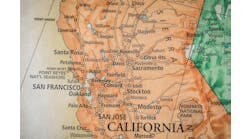Two leaders of strong state-level health information exchanges argue that every state should have a state-designated and regulated health data utility with a monopoly akin to an electric company.
Speaking on Aug. 25 at the virtual annual meeting of the Strategic Health Information Exchange Collaborative, David Horrocks, president and CEO of the Maryland-based Chesapeake Regional Information System for our Patients (CRISP), and John Kansky, president and CEO of the Indiana Health Information Exchange (IHIE), noted that during the pandemic, states that already have such state-level organizations in place were able to leverage them for public health needs.
Although CRISP and IHIE have different business models, they do provide a variety of statewide services. CRISP has grown to be an affiliation of three nonprofit HIEs in Maryland; Washington, D.C.; and West Virginia. Horrocks said that in Maryland there is not a strong mandate to participate and pay the HIE a fee, but there are mandates that require data to flow. “We get reportable conditions, including tuberculosis and COVID-19, immunizations and overdose events, Medicaid claims, and hospital ADTs. With mandates come statewide connectivity,” he said. “The difference between having 90 percent and 100 percent of the data is a lot greater than 10 percent value. The HIE can say ‘I can take care of this function for you in public health.’ It allows you to serve a different role than you otherwise could.”
Horrocks and Kansky also agree that HIE organizations should cooperate across state borders through affiliation or consolidation. As mentioned above, CRISP has expanded to Washington, D.C., and West Virginia. In 2019, IHIE announced plans to consolidate with two other Indiana-based HIEs.
Kansky said more consolidation among HIEs is necessary. “HIEs need scale,” he said. “We need to cooperate and leverage the investments we need to make. If we are going to spend seven figures to API-enable our platform, it is easier to do with three other HIEs. The economies of scale are obvious.” So at the same time they are taking on this statewide utility role, HIEs need to find partners to affiliate with, he said. “I would offer the Patient-Centered Data Home as an example of a HIEs working together in a multistate fashion, but there also needs to be business affiliation to seize on economies of scale and increase influence at the national level. The Patient-Centered Data Home is a cool initiative. Imagine if 50 state-designated entities all participated in that initiative.”
Horrocks said that aligned with this concept of a health data utility is the idea that basic clinical document exchange should not be the main focus. “The basic movement of data is going to become ubiquitous and commoditized. To be provocative, if most of what you do is deliver uncurated documents, that is not going to be enough of a reason to stay in existence,” he said. Instead, these HIEs should focus on more advanced use cases, including public health.
Kansky agreed about the long-term value proposition, but added that there is no way that IHIE is walking away from basic document exchange until a well-functioning national network exists to carry out that function.
If a state government officially designates a nonprofit entity as a health data utility, that does imply only one HIE has this relationship, and the two speakers agreed that monopoly sounds negative in our free-market economy where policymakers want to encourage innovation. “HIEs needs to be granted some monopoly status to fulfill this role as a health data utility,” Kansy said. “Because we want free market principles to function and to have appropriate competition, once they are granted monopoly status, you need a regulated utility model – like we do for power utilities or telecommunications.”
Horrocks used power utilities as an example of how it might work. If you set up a solar panel farm, the public utility is required to take the power it generates and share its transmission capabilities for a fee. Similarly, if healthcare customers want to use a strong offering such as PatientPing to receive ADT notification services, the health data utility should be required to allow customers to buy that tool and get all relevant encounter data through it.
Horrocks and Kansky acknowledged that the HIE framework in some states is fragmented with no obvious organization to take on this lead role, but they argue that through consolidation and government support, HIE leaders in those states should get to work building something similar now.


